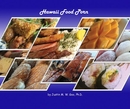One of the most successful Chinese merchants, was Chun Ah Fong. If you know anything about Hawaiian history, you'll know he was one of the most influential people in the Hawaiian Kingdom. He was Hawaii's first Chinese millionaire. He was very close to King David Kalakaua, even marrying his hanai sister. He built many estates all over the island. On, one of his estates up in Nuuanu he planted a famous Chinese banyan tree (one of a pair that he named yin and yang). Later, this estate was purchased from him by another Chinese merchant, Chun Hoon, and the site became the famous Chun Hoon Supermarket (one of the biggest supermarkets in Hawaii). In the early 80's, a clever restaurantuer named, Roy Shimonishi, decided to build a restaurant on the site, AROUND the famous banyan tree. It was quite unusual, to have the trunk of this huge tree right in the middle of the restaurant, and it became one of his trademarks. The restaurant? Why, the Hungry Lion of course.
Since then, they've built a plaster molding around the tree trunk, something about bugs from the tree getting into the restaurant. But the tree is still standing, and protruding from the top of the restaurant. As time marched on, their walls got adorned with paintings of some very famous hungry lions, namely Mufasa, Simba, Nala, and others. But their food remains the same benchmark of local food it always was, with the same portions large enough to feed a hungry lion.
The Aloha Bowl at Hungry Lion
The Hungry Lion is one of those places I go when I need to have my fix of really really local food (like on my way to or home from the airport after a long trip). My favorite thing there, is the Aloha Bowl. This thing is just plain massive. Imagine if you will, a saimin bowl, not a small rice bowl or a soup bowl or anything like that, but a full on saimin bowl, maybe 1/3 filled with rice. There's no measly 2 scoops here. And on this massive bed of rice, a perfect mixed plate of curry, chicken katsu, roast pork, and a teri-burger. All of these things are done to really local tastes. The teri burger for example, is local style teriyaki sauce. It's not exactly the Japanese style thinner sweeter sauce, nor is it that shoyu type thing that mainlanders think is teriyaki sauce. This is the real local style teri sauce. The same thing goes for the curry. As for the roast pork, it's a nice soft piece with a good mix of fat and lean. The really great thing is towards the end when the curry, the teri from the burger, and the brown gravy from the roast pork swirl together. Okay, that doesn't sound appetizing at all . But imagine towards the end of a banana split, when the chocolate syrup, the strawberry syrup, and the pineapple syrup are all swirling together with the melted chocolate, strawberry, and vanilla ice cream. It would seem like an overwhelming hodge podge of flavors, but you know how good that goopy mess tastes. That's kind of the same effect that the mixing of gravies has. Of course, the bowl is so huge, that I rarely can finish the whole thing. But that's okay, more for later.
Hungry Lion has a ton of local favorites, so I'll probably be revisiting them here at some later point. Suffice it to say that the restaurant, like the huge tree that it's built around, has withstood the test of time and become a Hawaii icon.




No comments:
Post a Comment